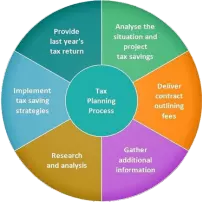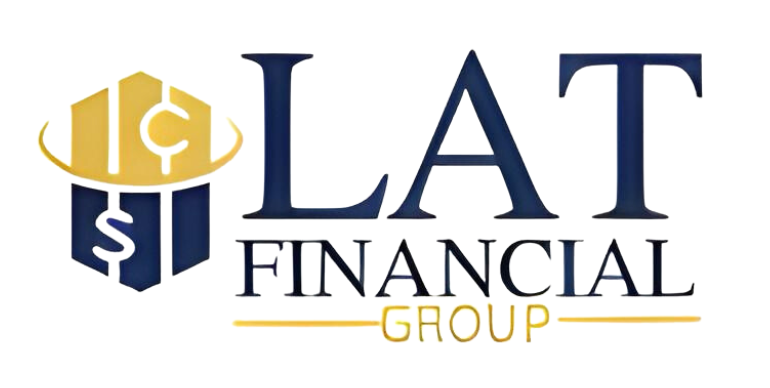IN THIS ISSUE
DID YOU KNOW?
- HOW TO MAXIMIZE YOUR HOME OFFICE DEDUCTIONS
- DEFERRING INCOME TO MINIMIZE YOUR TAX OBLIGATIONS
- SMALL BUSINESS TAX PLANNING STRATEGIES
- STAYING AHEAD OF THE CURVE:
HOW TO BE PROACTIVE WITH PROCUREMENT AND DEPRECIATION TO BOOST FINANCIAL GAINS - TAKING ADVANTAGE OF TAX DEDUCTIONS
- TAX-EFFICIENT RETIREMENT PLANNING
Small Business Tax Deductions
and Credits
by Audrey Jackson
Did You Know?
Small business proprietors should strategically manage their taxes as their earnings increase to prevent unexpected and substantial tax obligations. Effective tax planning is essential for a thriving business, and there are numerous strategies to minimize tax liabilities, particularly for businesses with higher incomes. These tactics encompass optimizing deductions for home offices, maximizing contributions to retirement accounts, and minimizing debt. In this newsletter we’ll discuss a few strategies on how to save for retirement and maximize tax deductions.
How to Maximize Your Home Office Deductions
Deductions for home offices are frequently overlooked yet can result in significant savings on your tax refund. This oversight often occurs due to misconceptions about what qualifies as a “home office.” Notably, both homeowners and renters are eligible for this deduction, extending to leased spaces. The deduction applies to various types of residences, ranging from houses to studio apartments, excluding hotels or vacation-stay properties like Airbnb. To qualify for a home office deduction, your space must meet the following two criteria:
1. Consistent and Sole Utilization: The are you designate as your office should be solely devoted to business activities. For example, if you use a guest bedroom for both your office and as a space for visiting in-laws, it does not qualify for this deduction.
2. Primary Business Location: Your home office must serve as your main place of business. This implies that you do not maintain another office elsewhere. The home office should be consistently and exclusively used for administrative or managerial tasks, including activities such as invoicing customers, conducting sales calls, managing finances, and scheduling appointments.



Deferring Income to Minimize Your Tax Obligations
Keep in mind that your income tax is determined by the earnings you generated in the preceding calendar year. A successful sales strategy, while advantageous for business, comes with a trade-off: the more income you earn, the higher your taxes. If you aim to reduce your tax liability in April, consider postponing some income until the following calendar year. The accounting method you can use for you business can be cash-basis or accrual-basis.
1. Cash-basis accounting: denotes a primary accounting method that records revenues and expenses at the moment when actual cash is received or disbursed.
2. Accrual-accounting: is an accounting method that acknowledges income when it is earned and documents expenses when liabilities are incurred, irrespective of when cash is received or paid.
Small Business Tax Planning Strategies
Before building a small business, choosing the right business structure, maximizing deductions, and reducing tax liabilities can make a big impact in business strategy. The aim is to help small business owners optimize their tax planning efforts and save money on taxes but how does this help with the tax planning? Your business structure should be aligned with your goals. Options include sole proprietorship, partnership, LLC, S corporation, or C corporation. Another is to take advantage of all eligible business deductions. Common deductions include operating expenses, home office expenses, and business-related travel. Additionally, contribute to a tax-advantaged retirement plan, like a SEP IRA or a Solo 401(k). This not only aids in saving for retirement but also provides immediate tax benefits.


Staying Ahead of the Curve: How to Be Proactive with Procurement and Depreciation to Boost Financial Gains
Equipment stands as one of the most substantial expenses in a small business budget. Writing off new acquisitions and divesting old equipment can significantly alleviate your tax burden. If there’s a need to acquire items like cars, laptops, or other equipment, consider making the purchase before the year-end. An earlier purchase date allows for a higher expense declaration or even a full purchase price write-off, as the item will have had less time to depreciate. Additionally, explore potential business credits for initiatives such as solar panels, energy-efficient upgrades, or other sustainable investments. To optimize your expenses and diminish your tax liability come April, consider the following steps:
- Declare the full expense in 2023
- Utilize a shorter depreciation timeline
- Apply an accelerated depreciation method
- Decrease the residual value
Taking Advantage of Tax Deductions
 Let’s deep dive in what can be the advantage of tax deductions. The qualified business income (QBI) deduction offers pass-through business proprietors the opportunity to deduct a portion of their share of the business’s income potentially reaching up to 20%.
Let’s deep dive in what can be the advantage of tax deductions. The qualified business income (QBI) deduction offers pass-through business proprietors the opportunity to deduct a portion of their share of the business’s income potentially reaching up to 20%.
However, this deduction is subject to various rules and constraints. For individuals operating specified service trades or businesses (SSTBs), eligibility for the deduction diminishes as income levels increase. SSTBs typically encompass service-oriented businesses, excluding engineering and architecture firms, where the success of the business relies on the reputation or skill of its employees or owners.
For example, these types of SSTBs are law firms, medical practices, consulting firms, professional athletes, performing artists, accountants, financial advisers or investment managers. For businesses classified as SSTBs, the QBI deduction begins to phase out when total taxable income surpasses $170,050 for singles or $340,100 for joint filers in the 2022 tax year. The deduction becomes unavailable once income exceeds $220,050 for singles ($440,100 for joint filers). If your business isn’t an SSTB but your income exceeds these limits, you can still claim the deduction, but it’s capped at 50% of W-2 wages or 25% of wages plus 2.5% of qualified property. Understanding and calculating the QBI deduction can be complex, so consulting with your accountant is advisable if you believe you qualify.
If your business falls outside the SSTB category, but your overall taxable income exceeds the specified thresholds, you can still qualify for the deduction. However, the deduction is constrained to either 50% of your portion of W-2 wages from the business or 25% of those wages along with 2.5% of your share of qualified property
Tax-Efficient Retirement Planning
Contributing to a retirement plan not only secures your financial future but also has positive implications for your tax rate. When you contribute to a 401(k), you use pre-tax income, reducing your monthly salary for each pay period and consequently lowering your overall tax rate.
Here at LAT Financial Group, we’ll help you start, expand and run your dream small business. Considering any of these small business deductions? Connect with one of our associates to evaluate your situation and plan for the future.

